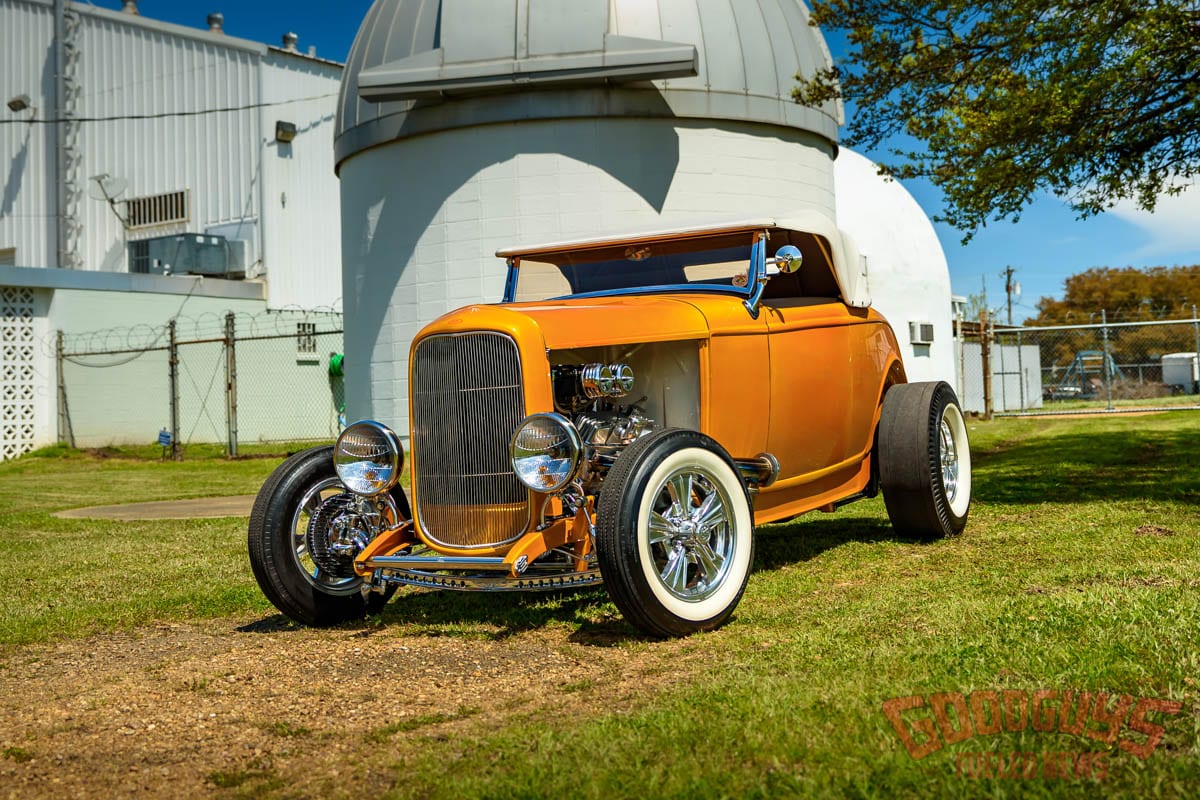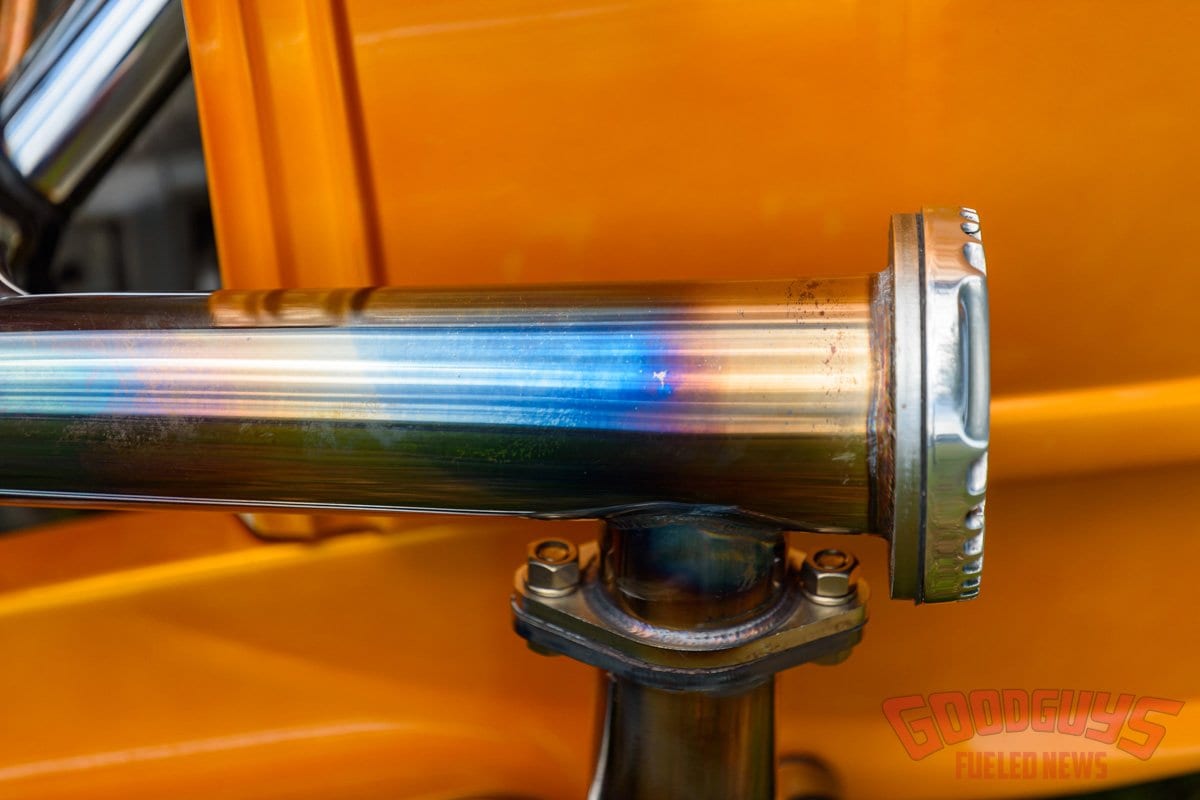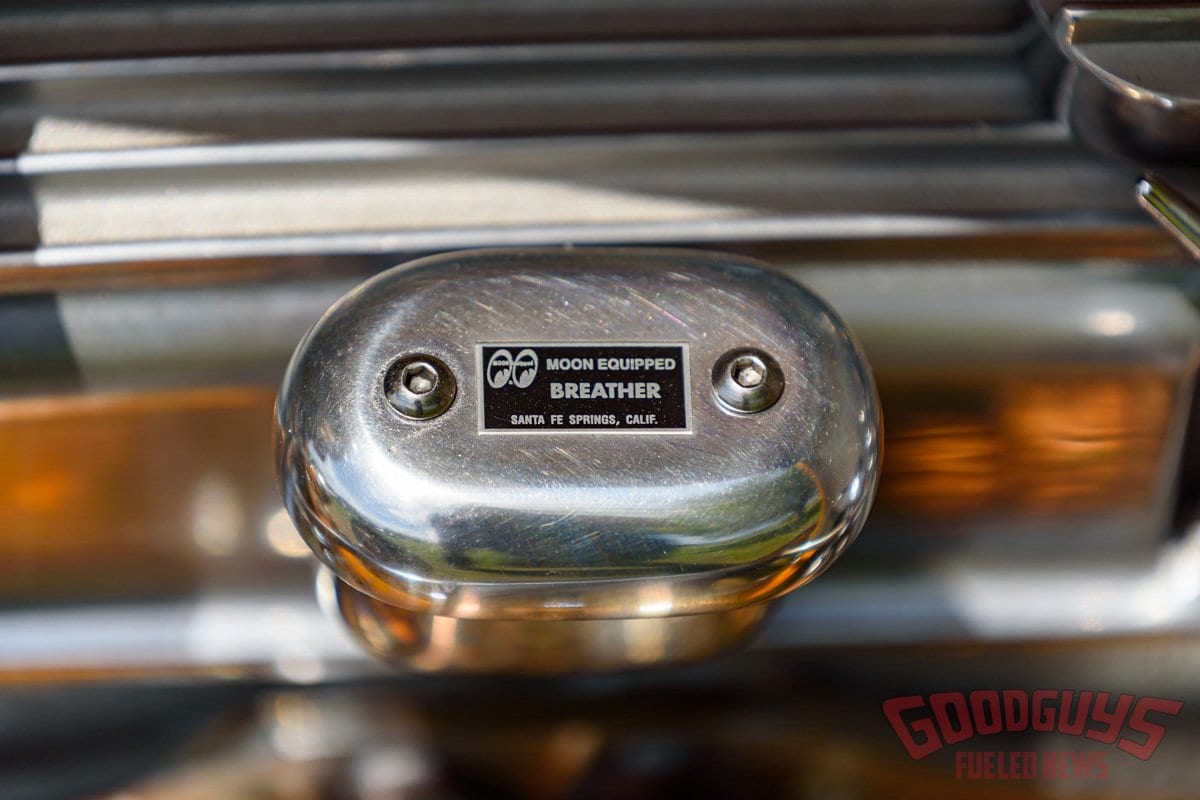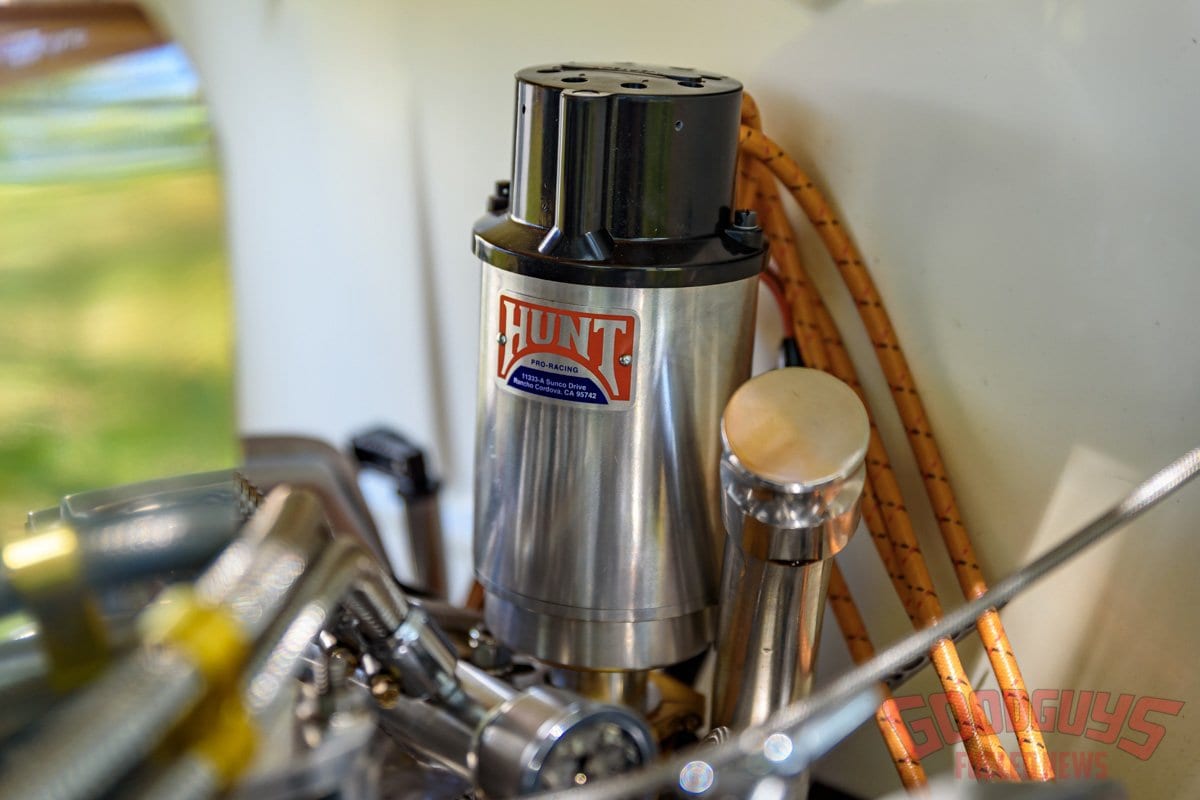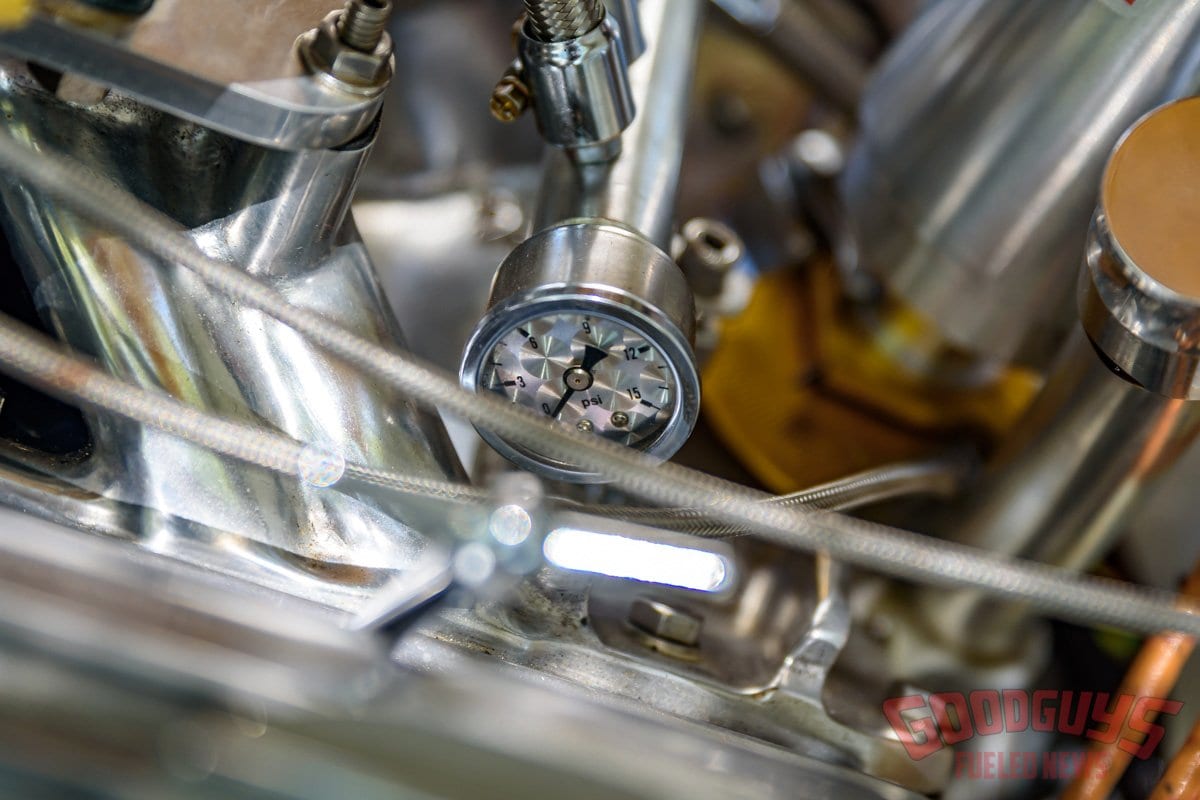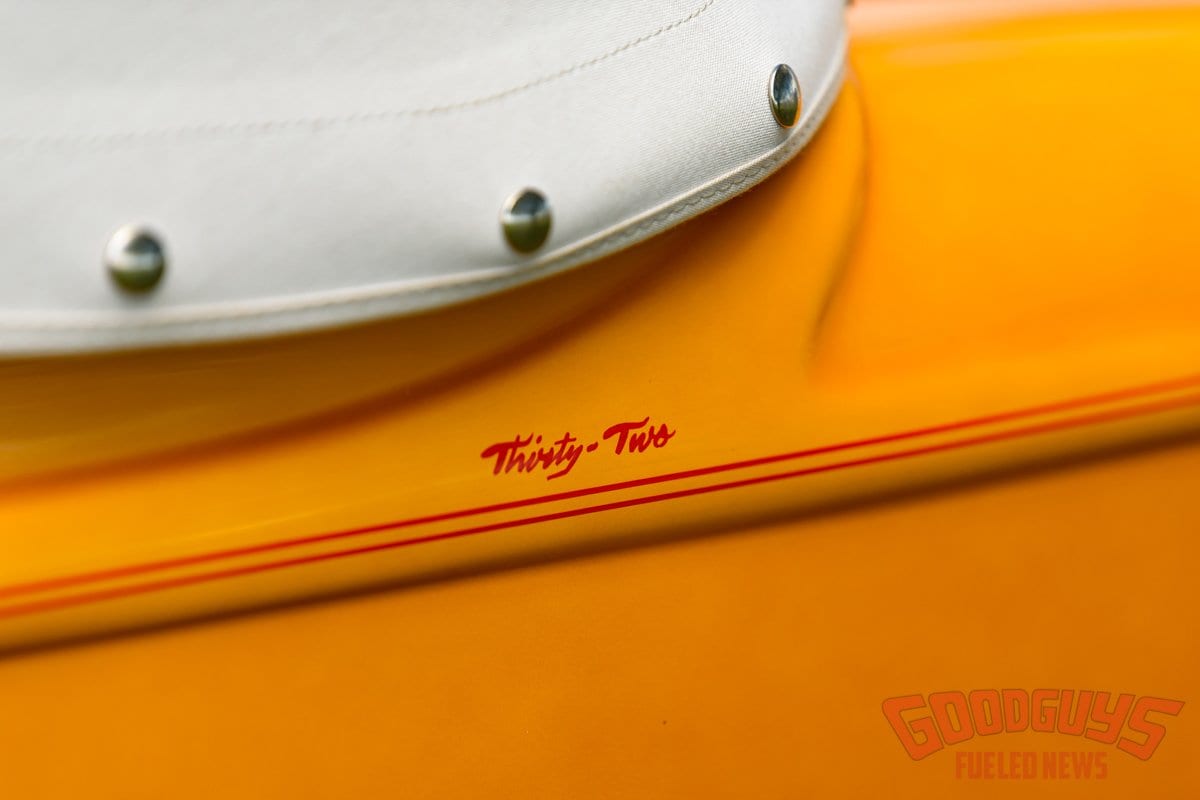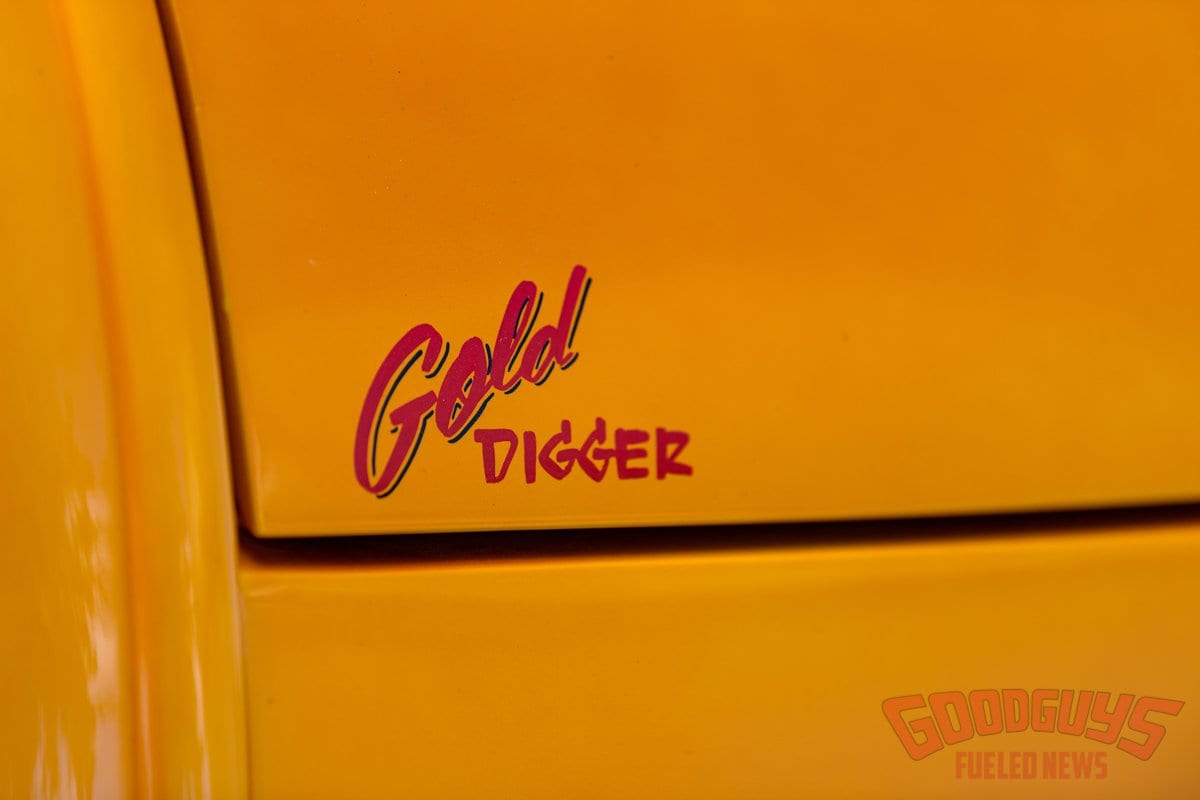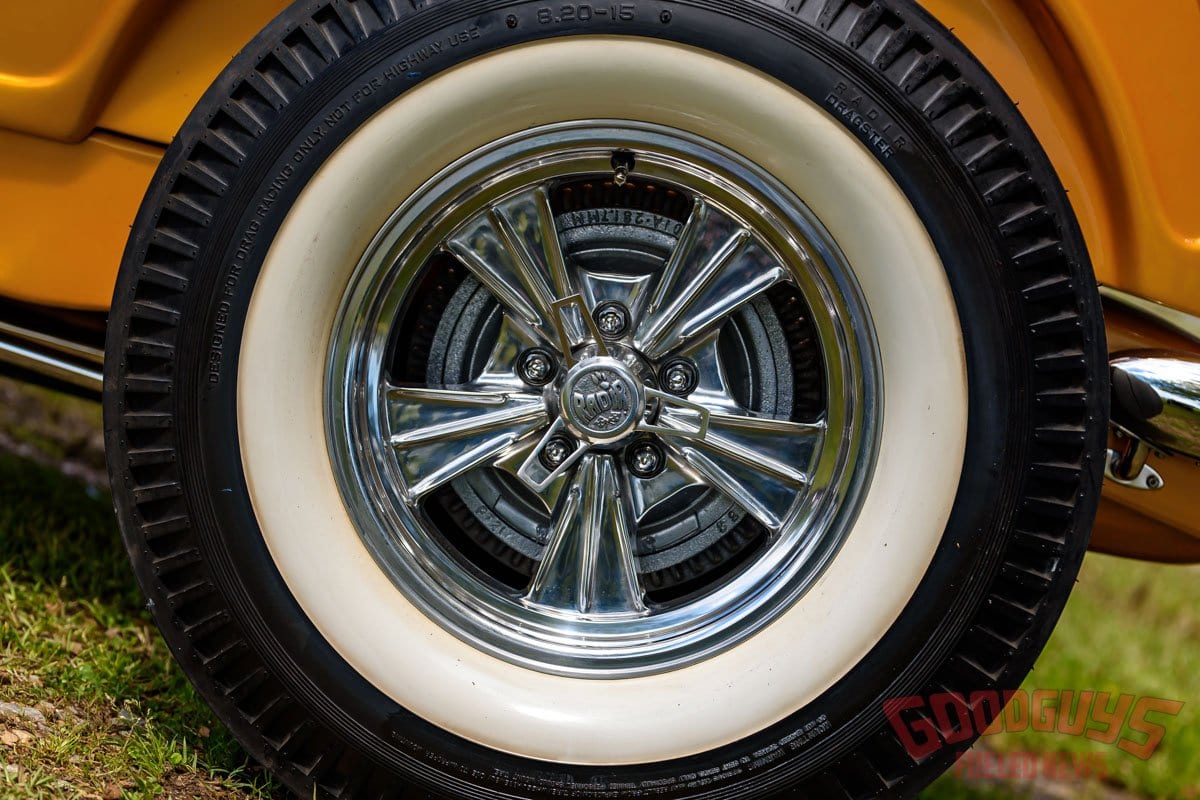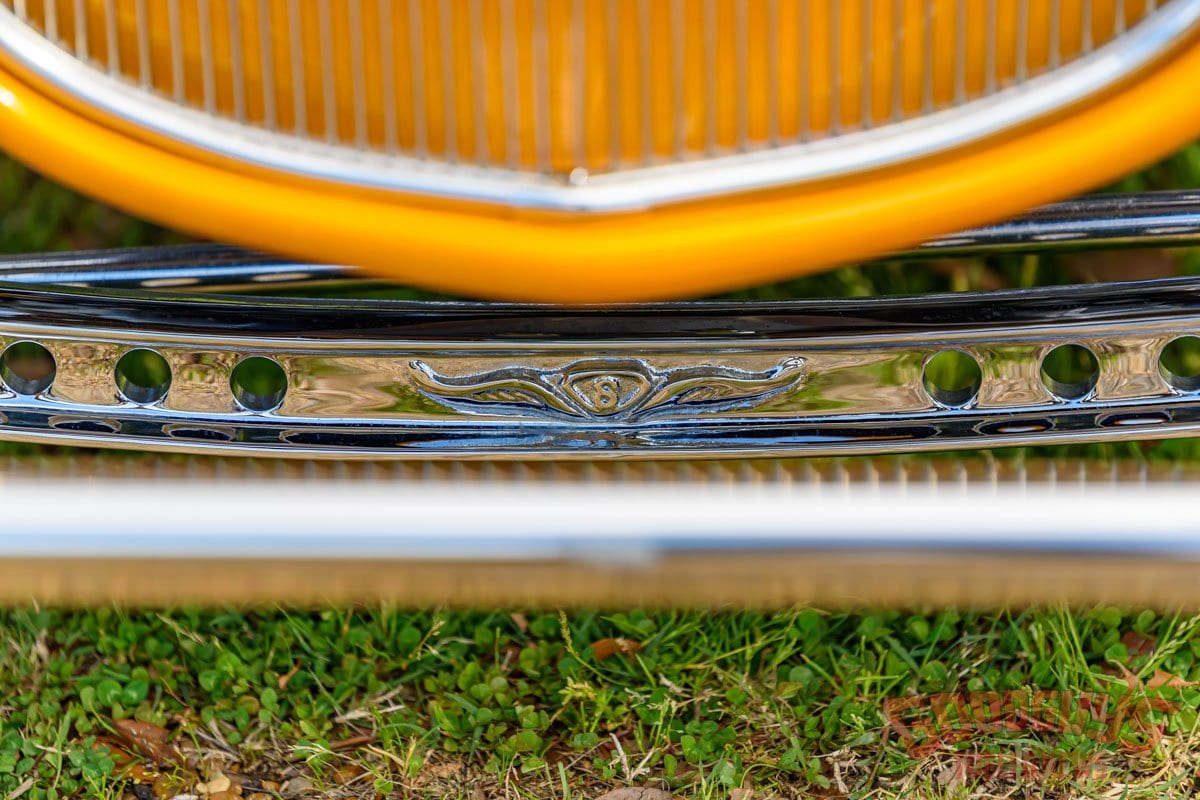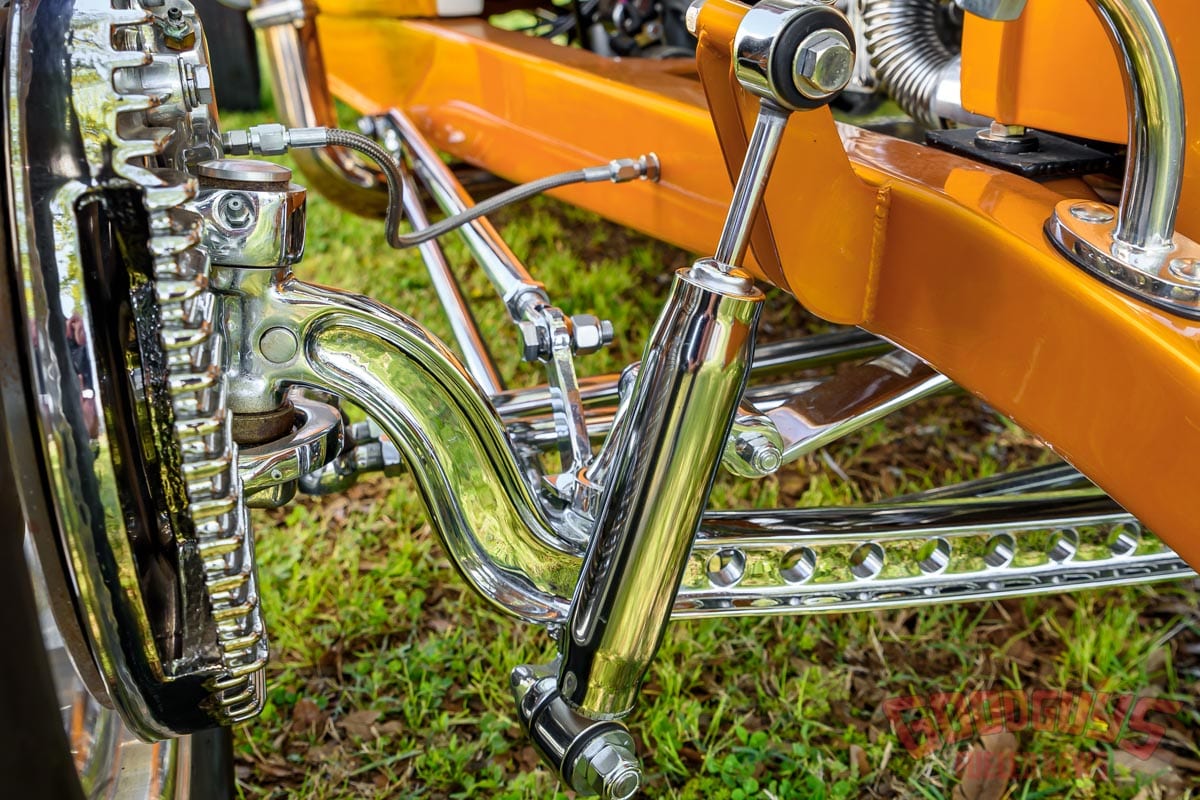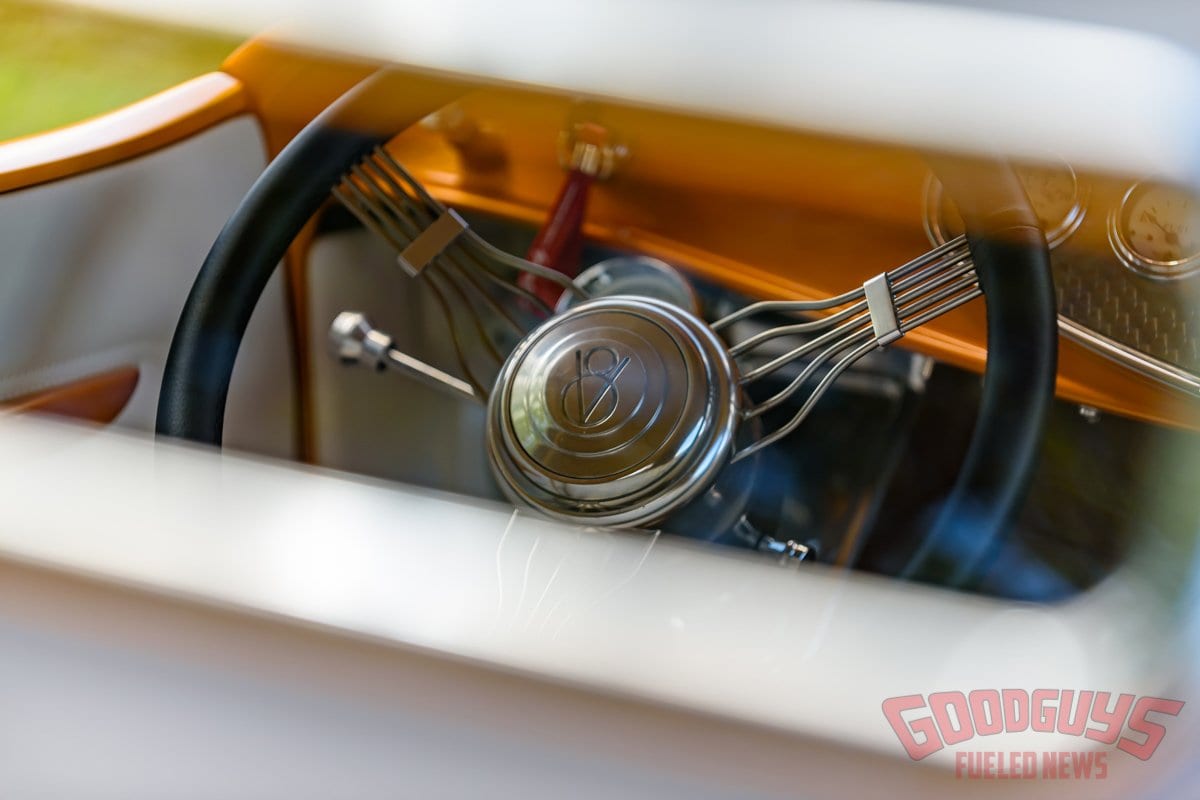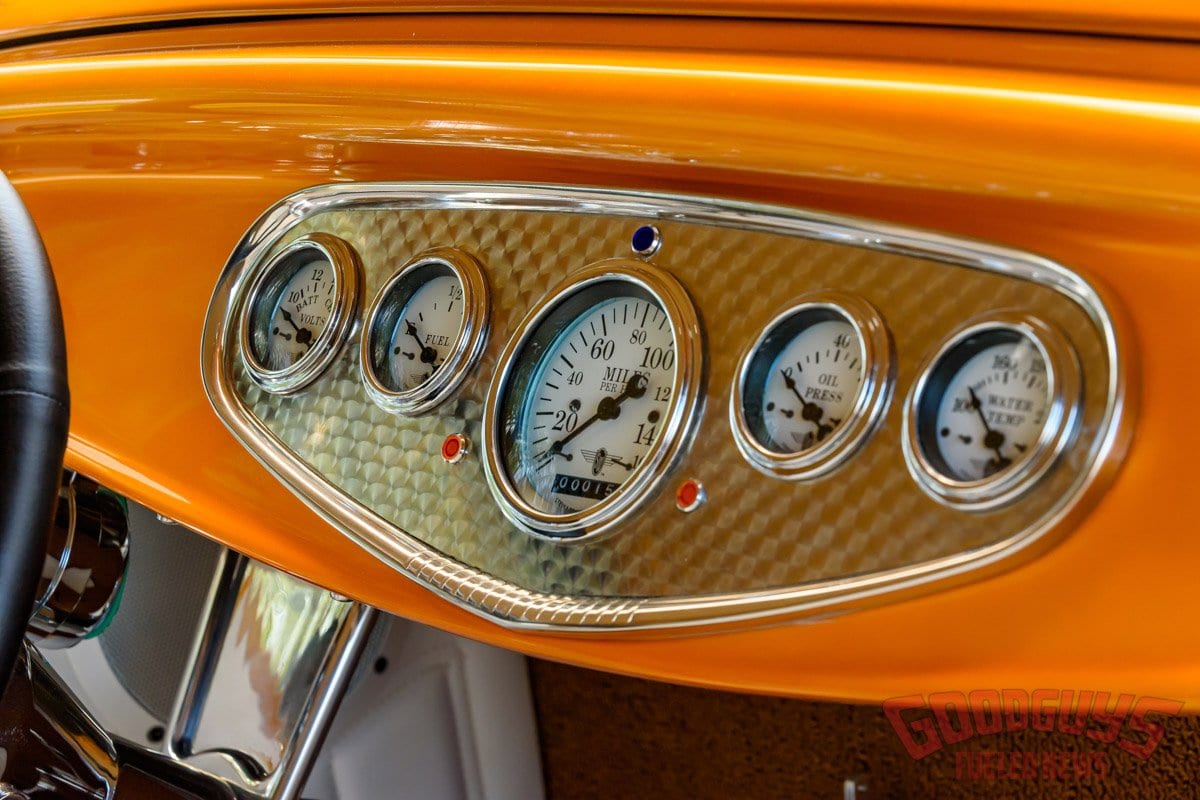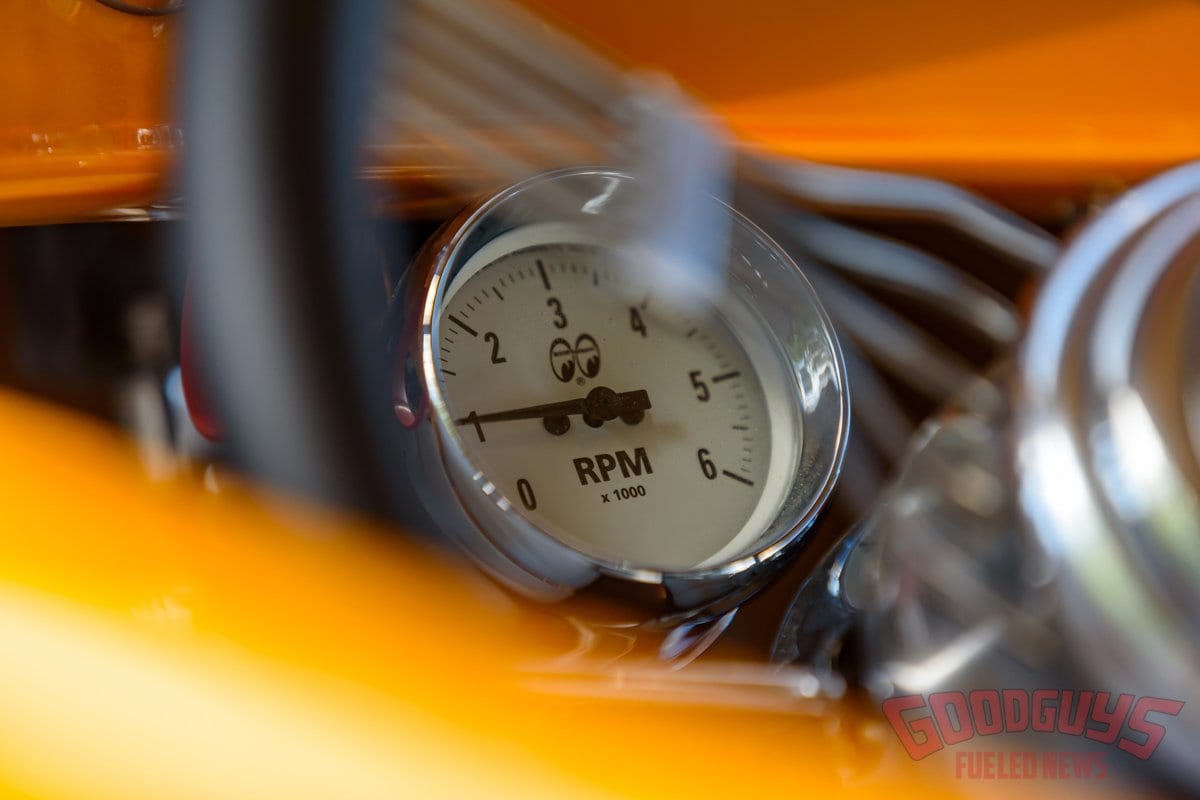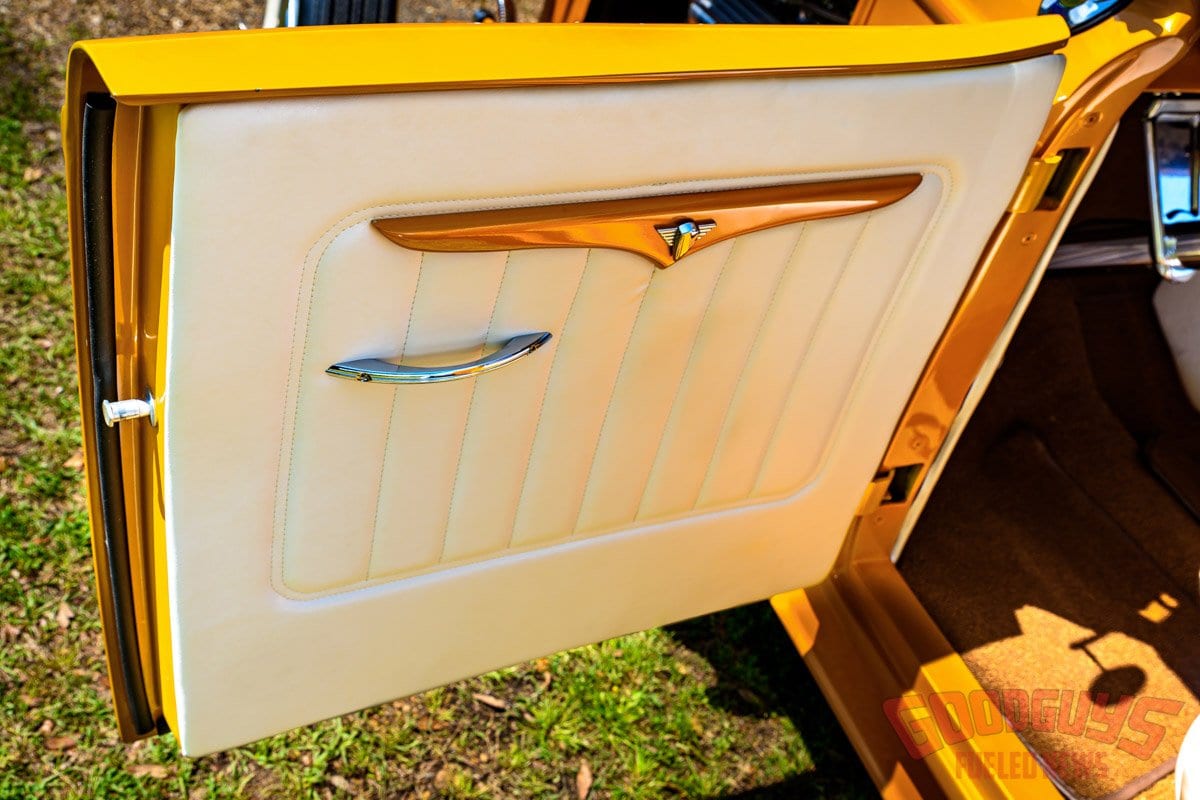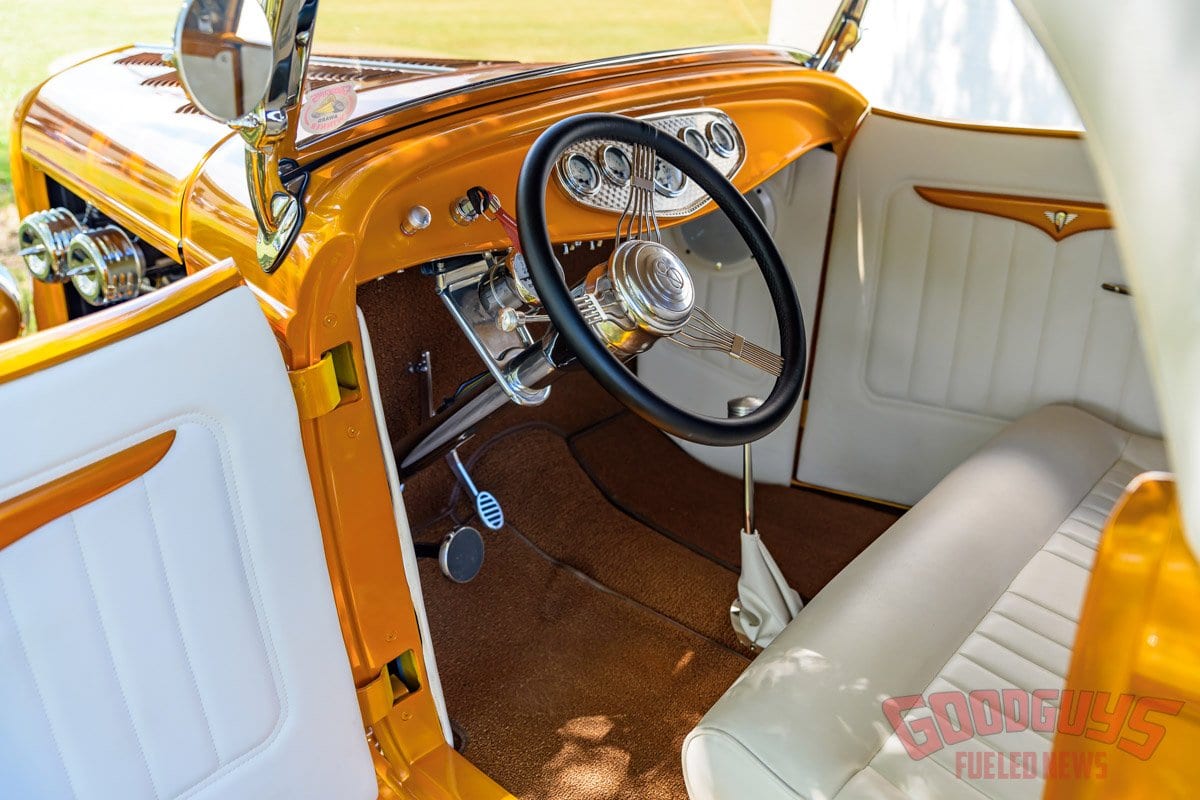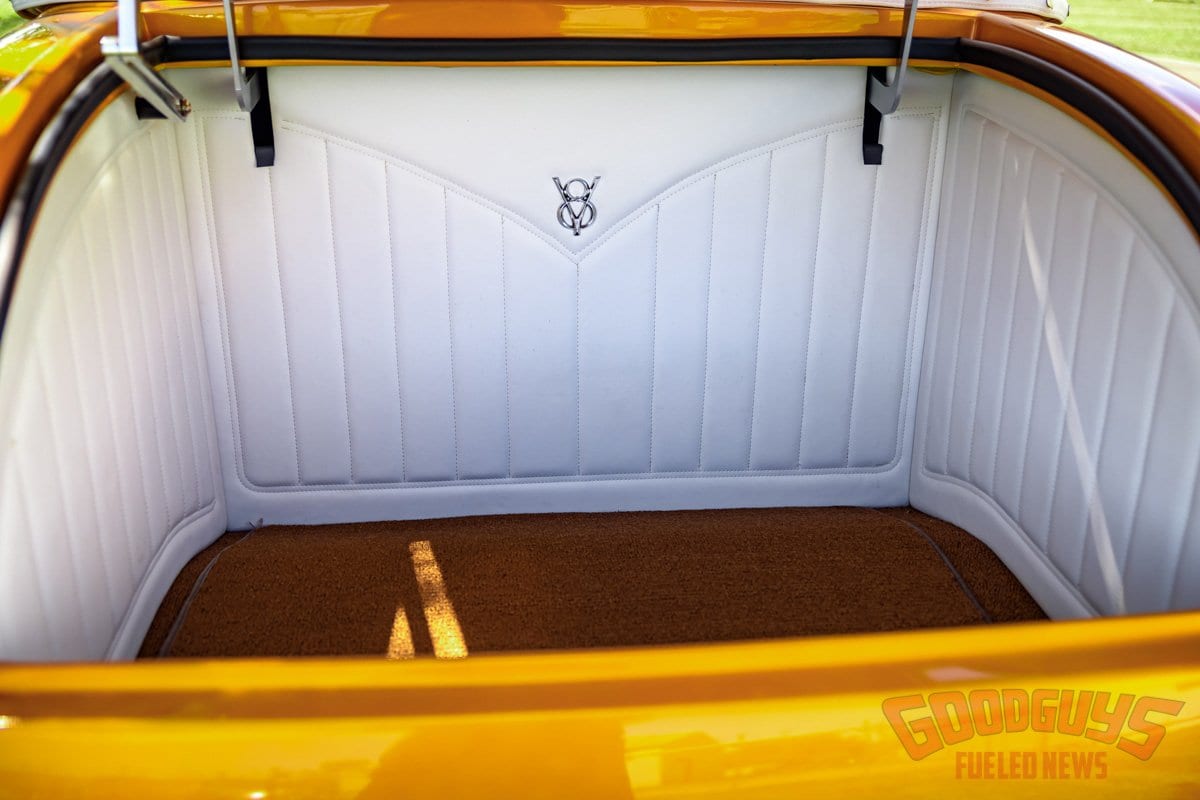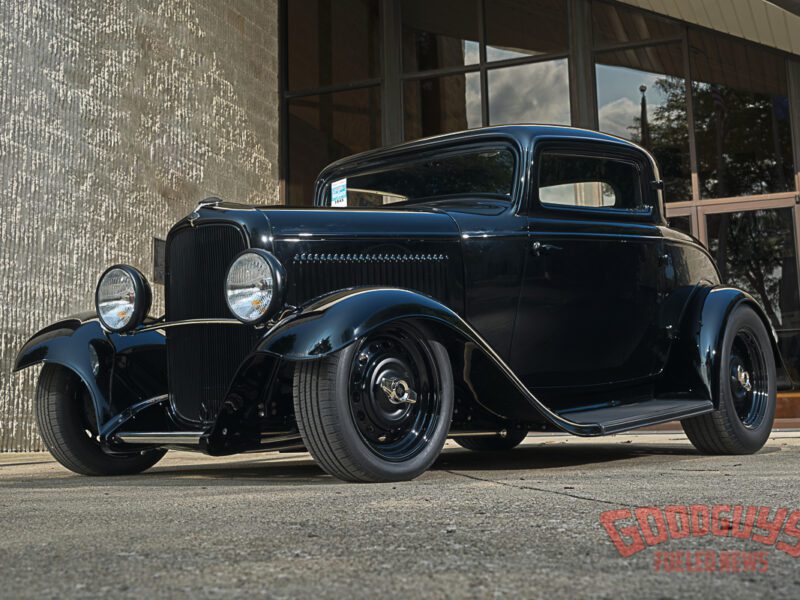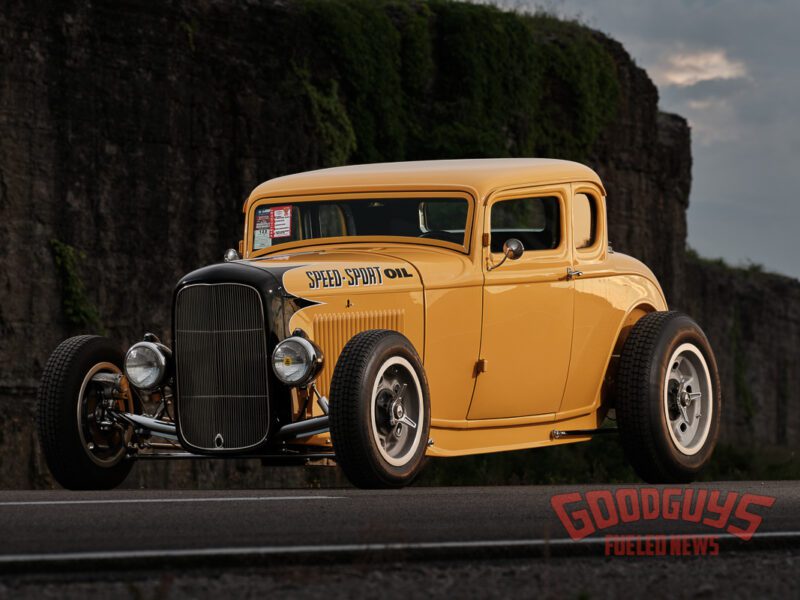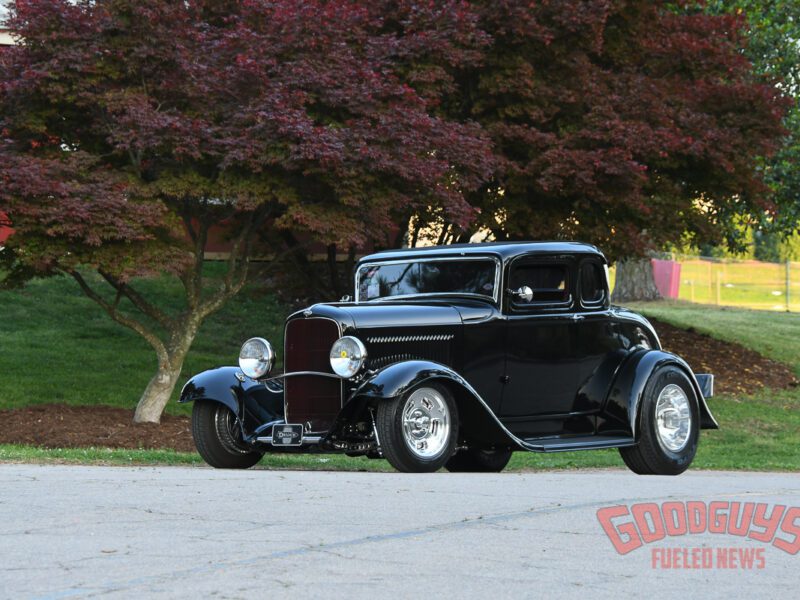Gold Digger ’32 – A Unique Deuce Roadster Built by The Father/Son Duo of Roger and Miles Harris
These days, it is hard to find a kid who is into cars for more than a fleeting moment. With shorter attention spans and technology being shoved down their throat daily, it’s difficult to get them to have passion for something that can take years to come to fruition. Fortunately, Roger Harris of Vicksburg, Mississippi, doesn’t have that problem. When it came time to build this 1932 Ford Roadster, it was his then-16-year-old son, Miles, who pushed him to complete this uniquely rare award-winning father/son project. Even without the connection, the car itself has an incredible tale stemming from the vintage Latham axial-flow supercharger adorning the engine.

It’s a Family Affair
As you can see, this isn’t your average father/son project. Actually, it all starts a generation earlier with Roger’s parents, Burl and Dorothy, who gave him the bug in the early-’70s. Burl was a welder by trade but built and restored cars as a hobby. Roger and his brother Greg grew up working on cars with their dad and traveling with their parents all over the South to rod runs and car shows. If it was just Burl and the boys, they would take his ‘34 Plymouth Coupe, but if mom went along, she would drive a ‘36 Ford. Roger has fond memories of these family adventures, and it shaped him into a car nut from an early age.
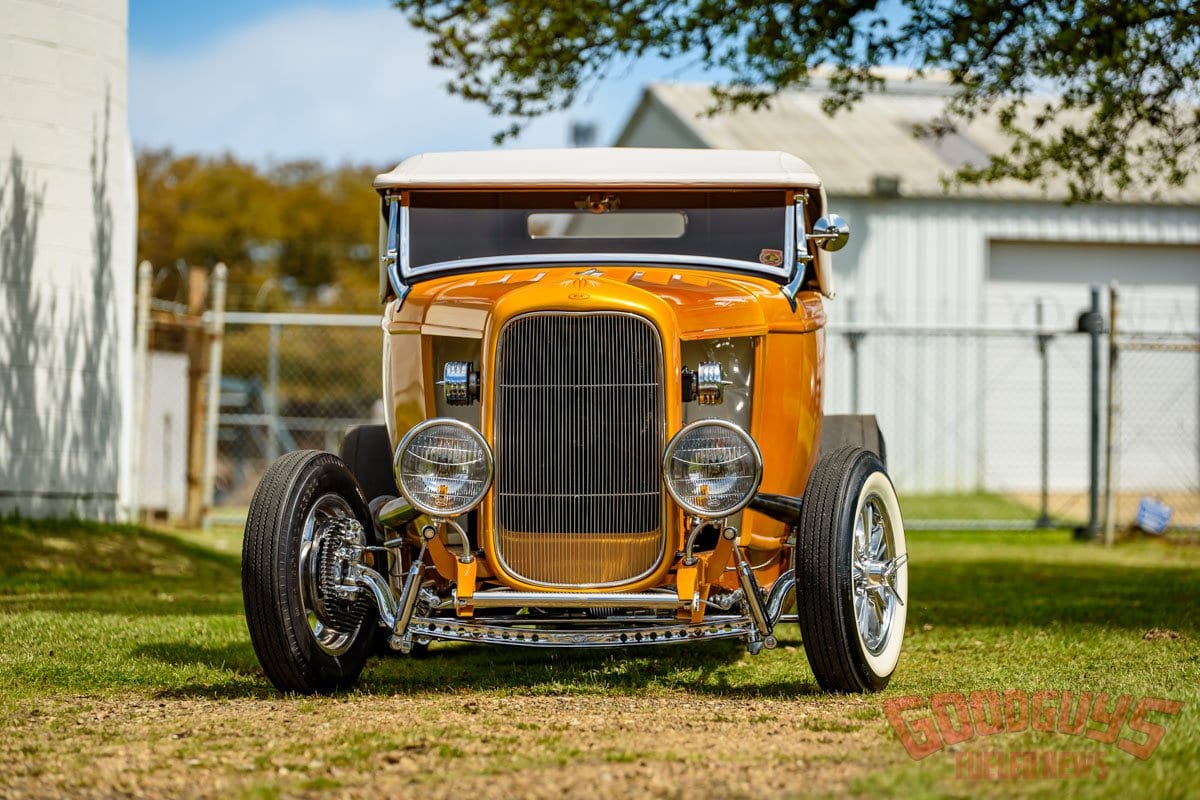
He drove his own father/son project to high school — a hot-rodded 1948 Ford pickup. Once out of college, he moved away, bought a house, and built a small shop out back. After building a ‘68 Camaro, then a ‘72 Bronco, Roger got the chance to rescue his dad’s tired old Plymouth from a barn. He fixed it up and dropped in a street-friendly 392ci Hemi and still takes it to shows (and wins! – we met Roger at The Vault 390 Car Show where he picked up Best Street Rod with it). He built several cars and vintage motorcycles along the way.
The Family Jewel
But, it was during those early-teen years that Roger first spotted the part that would become the crown jewel of this ‘32 roadster. Back in 1962, Burl’s buddy Charles Womack forked out a hefty sum (for the time) of $795 for a Latham Supercharger adorned with four Carter YH side-draft carburetors to campaign on his ‘57 Chevy at the drag strip. Unfortunately, the Chevy was completely destroyed in a crash but the supercharger and all of its components were removed, wrapped in newspaper and plastic bags to be used again. Roger remembers getting a glimpse of the Latham when he was a child and even asked “Mr. Charlie” to call him should he ever decide to sell it.
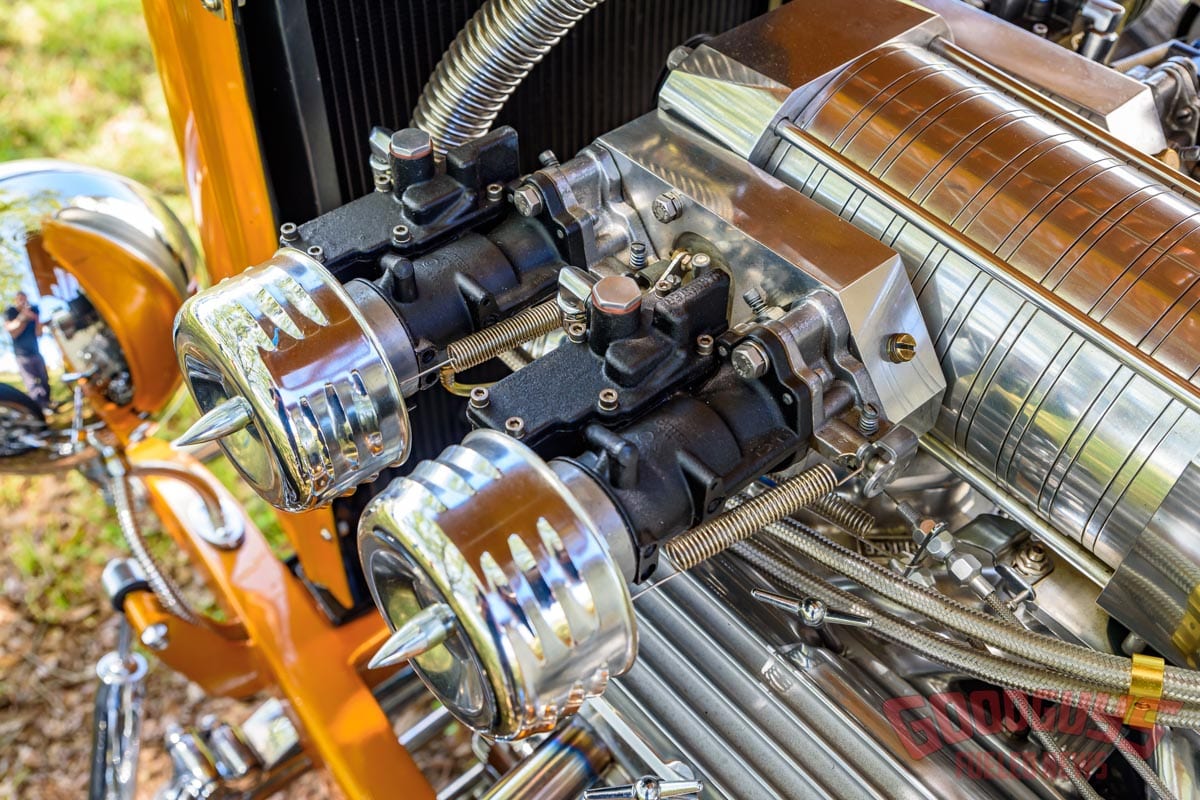
True to his word, Mr. Charlie called Roger 30-years later to see if he was still interested in that old supercharger. Now a successful tugboat and barge company executive, Roger jumped at the chance, telling him: “It’s a two-hour drive, but I’ll be there in an hour-and-a-half!” When they arrived at the ancient hot rod garage, to his amazement, Mr. Charlie pulled out the same old dusty box that Roger had seen 30-years prior — it hadn’t moved in all those years!
As they unwrapped each newspaper layer, it revealed a better glimpse of the shiny blower. The Latham and Carter carbs were in remarkable condition for being nearly 50 years old. The billet aluminum required little hand-polishing effort to bring it back to its former glory, while the carbs were refreshed and the bearings replaced for good measure. So, now the question was what to put it in!
What is a Latham Supercharger?
Norman Latham of West Palm Beach, Florida was the first to use an axial-flow compressor as an automotive supercharger. They were built one at a time between 1958 until 1964 — with just 614 ever produced, they are extremely rare today. Latham Superchargers gained notoriety in a time when few superchargers were made for street use. Hot Rod, Motor Trend, and Rod & Custom magazines raved about the sleek and shiny compact unit that performed well at drag strips, salt flats, and on the street. Don Garlits, Roger Huntington, and Red Byron praised the Latham for having “phenomenal performance with excellent workmanship and reliability.”
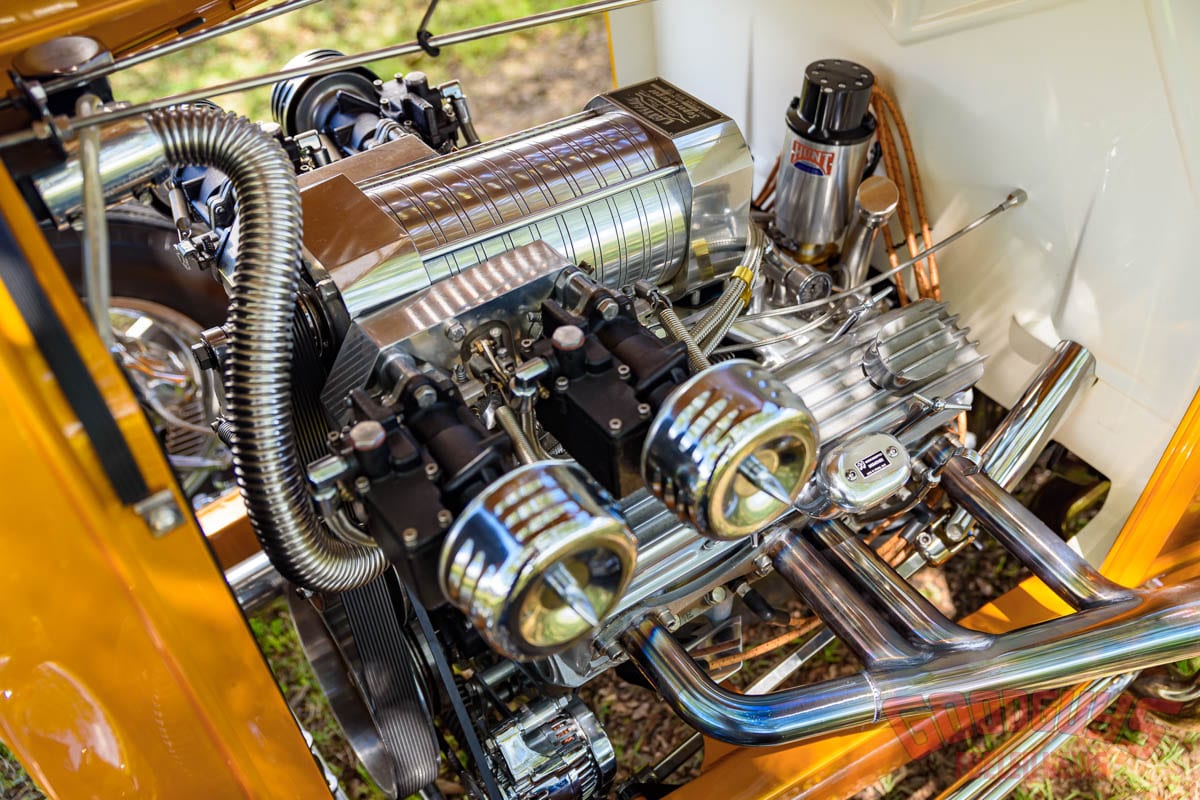
The axial-flow design requires the rotor to operate at a 5:1 ratio with the crankshaft which means an incredible 30,000rpm at 6,000-engine rpm, producing 10psi of boost on a 327ci engine. It makes an incredible sound! Though he produced a few different supercharger kits, most competition kits utilized a two, three, or four Carter YH side-draft carburetor configuration. The downfall of the Latham was the labor-intensive machine work required to produce each component out of billet aluminum. As a result, the competition kit sold for a whopping $795 in 1960, which was not sustainable with cheaper superchargers emerging in the market.
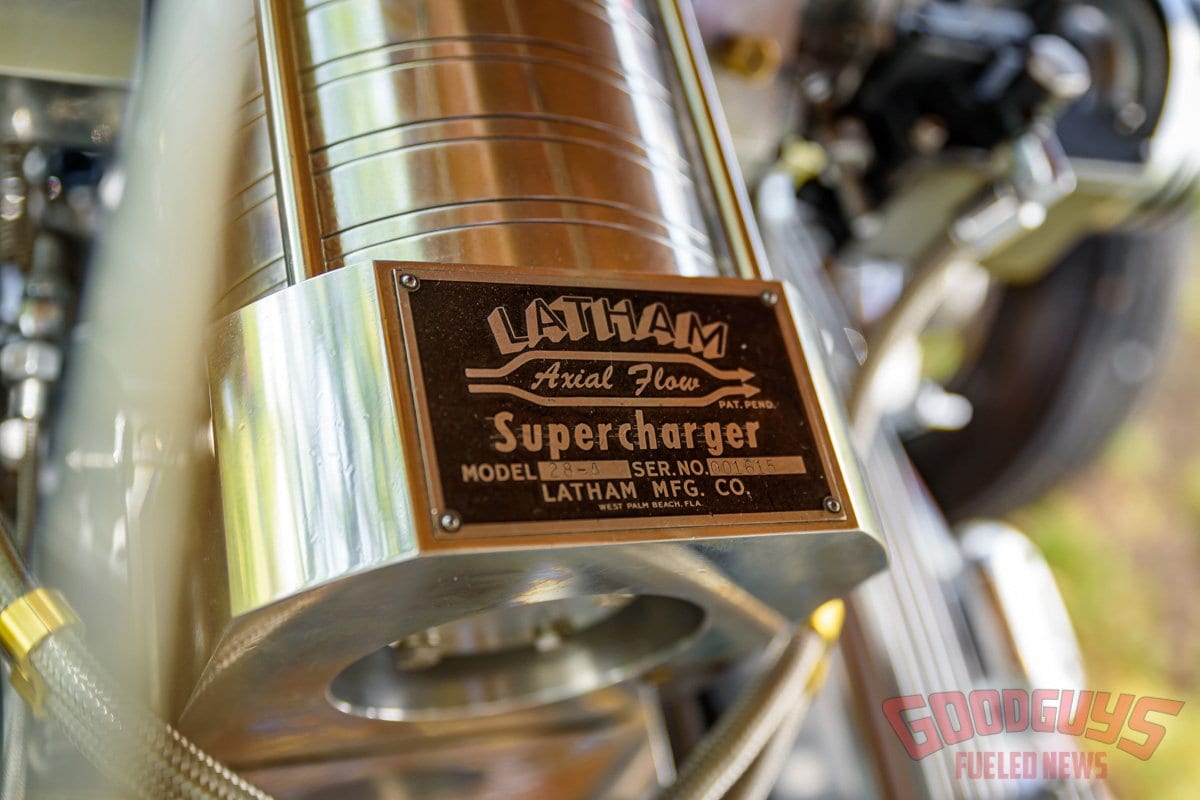
Building A Car To Showcase a Jewel
Roger had the blower for close to 15 years before Miles put the screws to him to get the project moving, but they knew they had to build the right car. They wanted a period car to showcase the ‘60s vibe of the Latham Supercharger without hiding it in an engine bay and no ‘60s car fit the bill. Instead, they decided a ‘32 Ford Roadster is a quintessential, timeless hot rod that checked all the boxes. The build would serve multiple roles:
- Miles was interested in mechanical engineering — what a great learning experience.
- The Latham Supercharger could finally be used and displayed again.
- Roger’s wife Sandra couldn’t possibly oppose the financial commitment of a father/son project! (somehow, we imagine this probably #1)
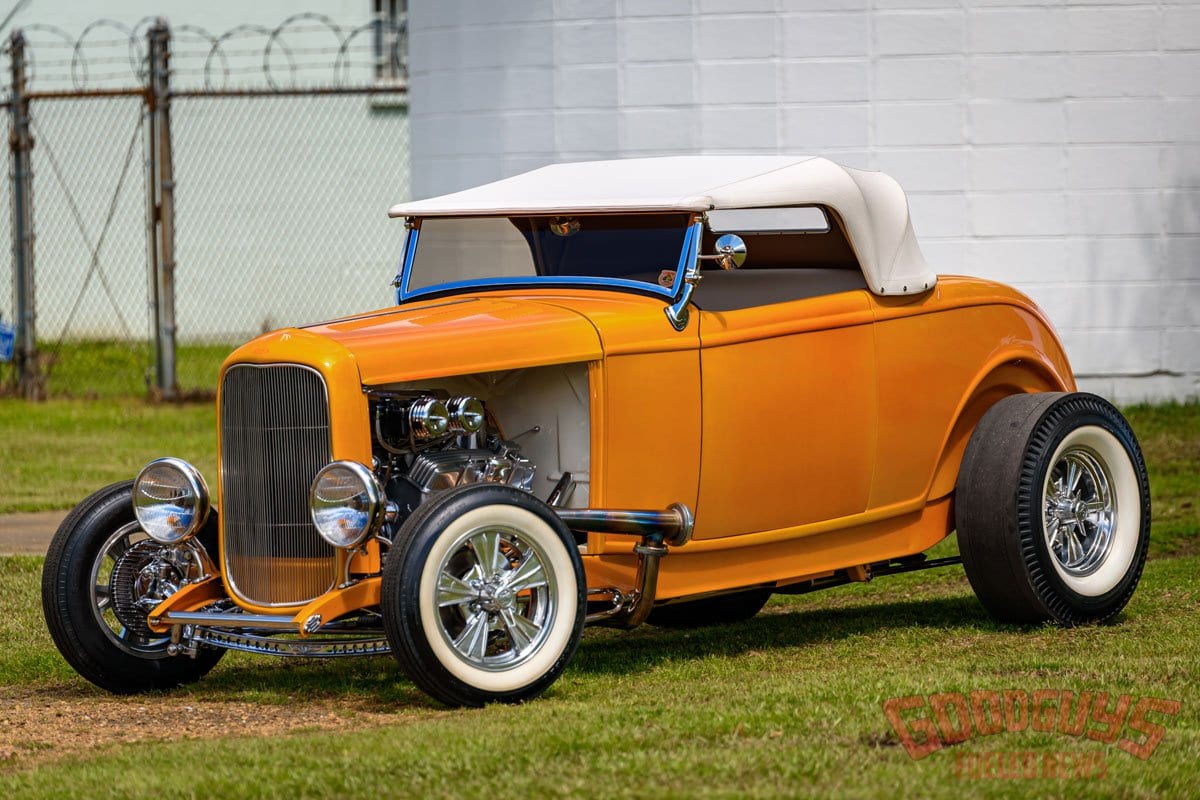
To Roger’s surprise, Sandra accepted the idea wholeheartedly and even threw in an incentive to complete the job quickly — she wanted Miles to have his senior portraits taken with the car. Roger says, “this was the first and only time my wife actually encouraged me to spend more time in the shop; it was like throwing a rabbit in a briar patch!” Over the next 2-1/2 years, Roger and Miles poured themselves into the build doing everything themselves except final body prep and paint. They used the best and most period-correct components they could find.
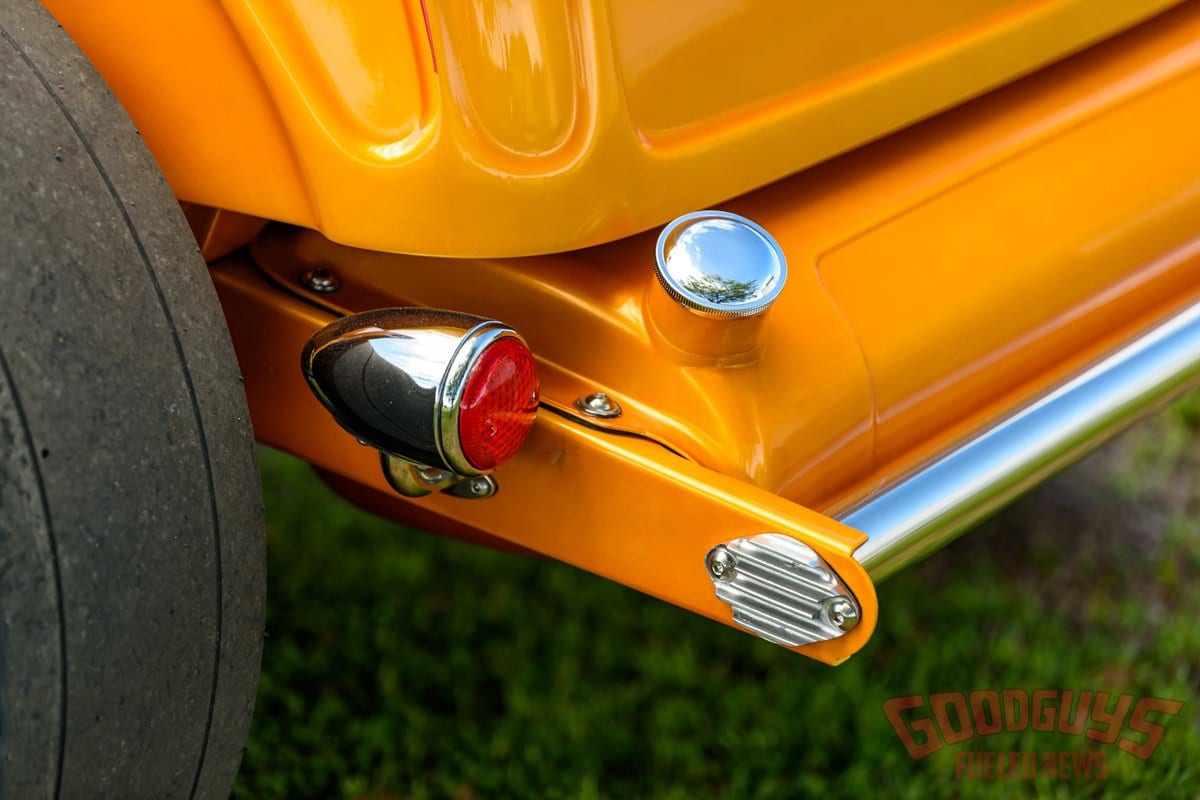
Making the Jewel Into a Gold Digger
The team decided a 1963 327ci Chevy engine with Camel Hump heads would best showcase the blower. Mike McKay of Performance Machine Works in Vicksburg did the machine work while the Harris’ put it together using the best internals and big valves to let the Latham breathe. A COMP Cams cam provides plenty of thump while a Hunt Magneto provides the spark before gases exit through the polished stainless-steel lake-style headers and 2.5-inch exhaust. They broke it in on a test stand to get the four Carter side-drafts synchronized and tuned properly for the street. The engine makes a healthy 413 horsepower at 6,000 rpm. A BTE Racing torque converter connects to the GM 700R4 transmission shifted by a Lokar shifter.
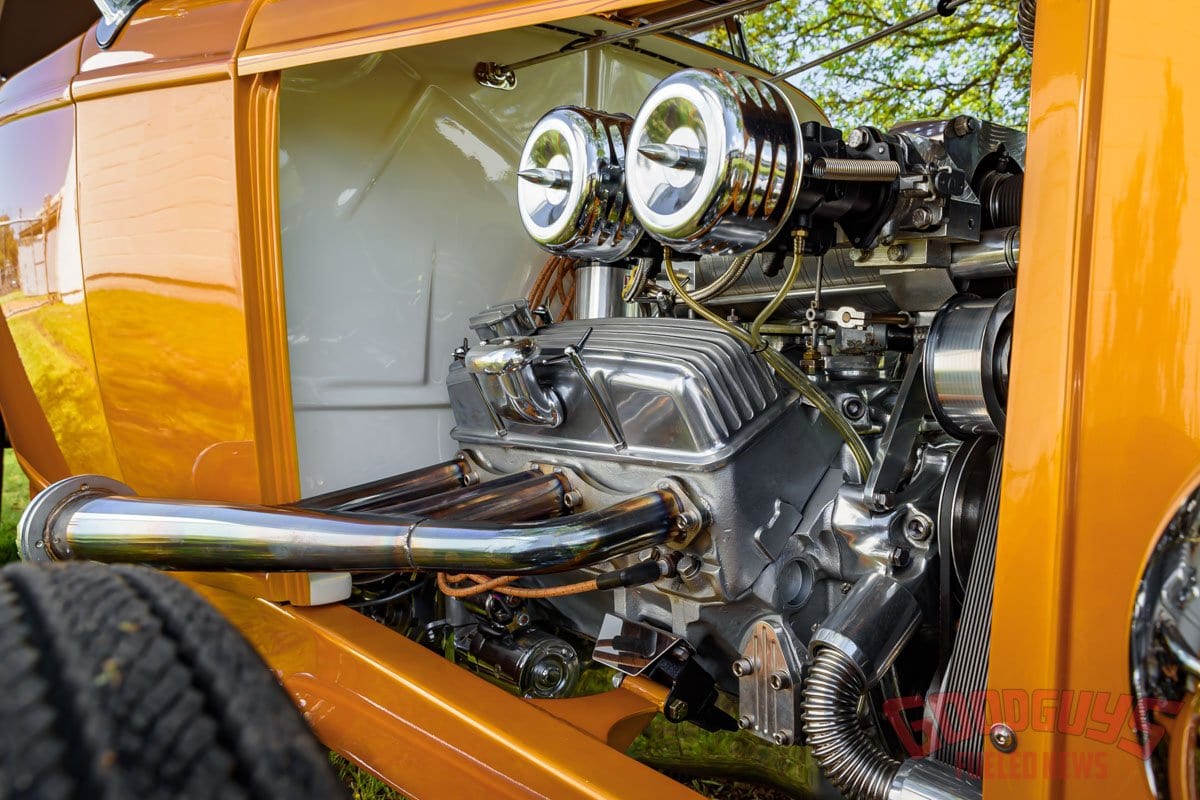
When it came to the chassis and body, the duo decided on a 3-inch stretched door combo from Russ No More in Chatham, Louisiana, but it still raised a challenge when it came time to install the engine between the rails. “The Latham Supercharger sits forward on the motor, so we had to move the engine rearward and upward for the large crank pulley to work in conjunction with the steering components, radiator, and suspension,” Roger exclaims. With open sides, a Rootlieb steel hood and a Speedway grille keep the majority of elements off the engine.
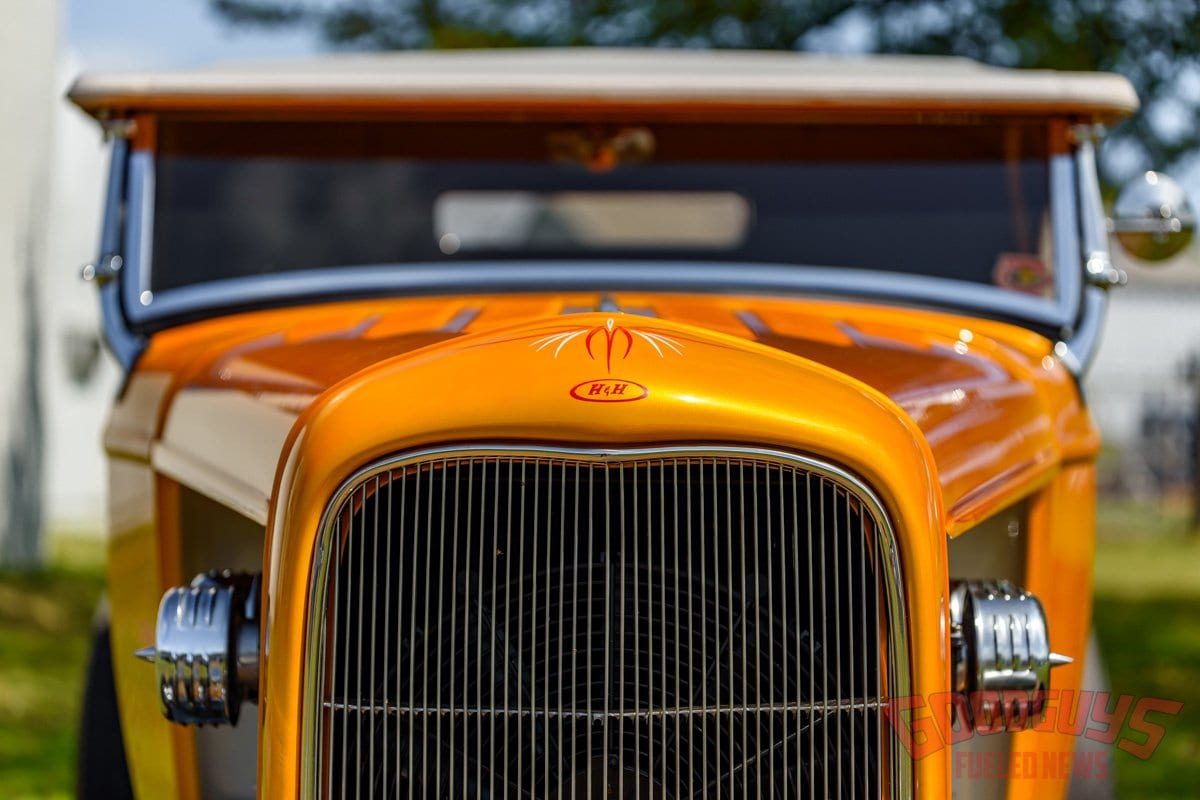
Roger and Alan Felker did the bodywork before Roger’s longtime friend, Ronnie Brown, came in to lay down the House of Kolor Pagan Gold candy paint, which turned out to be a tricky color to get right when painting the panels separately. During the buffing process, they accidentally burned a small area and ended up having to strip and repaint the entire section. The underside of the car is as nice as the top. After the paint was complete, Joey Hudson expertly laid down the pinstripes and the name “Gold Digger” on the trunk.
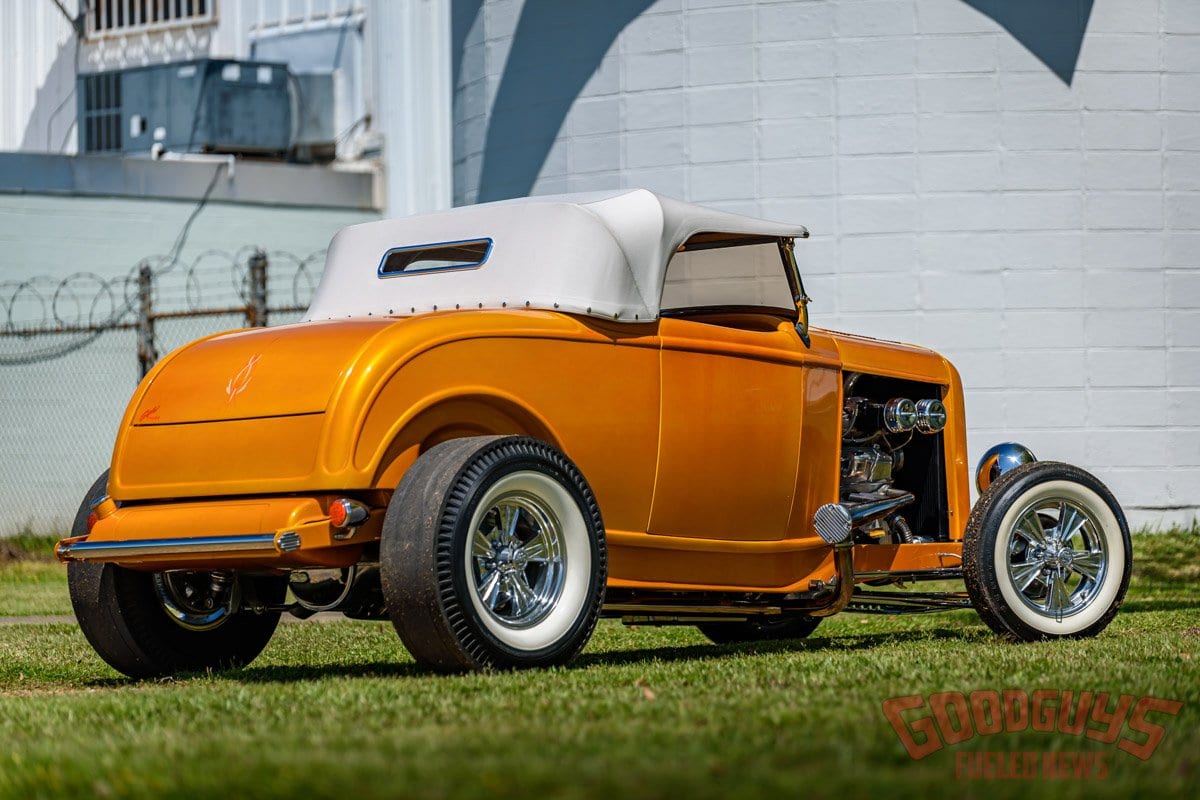
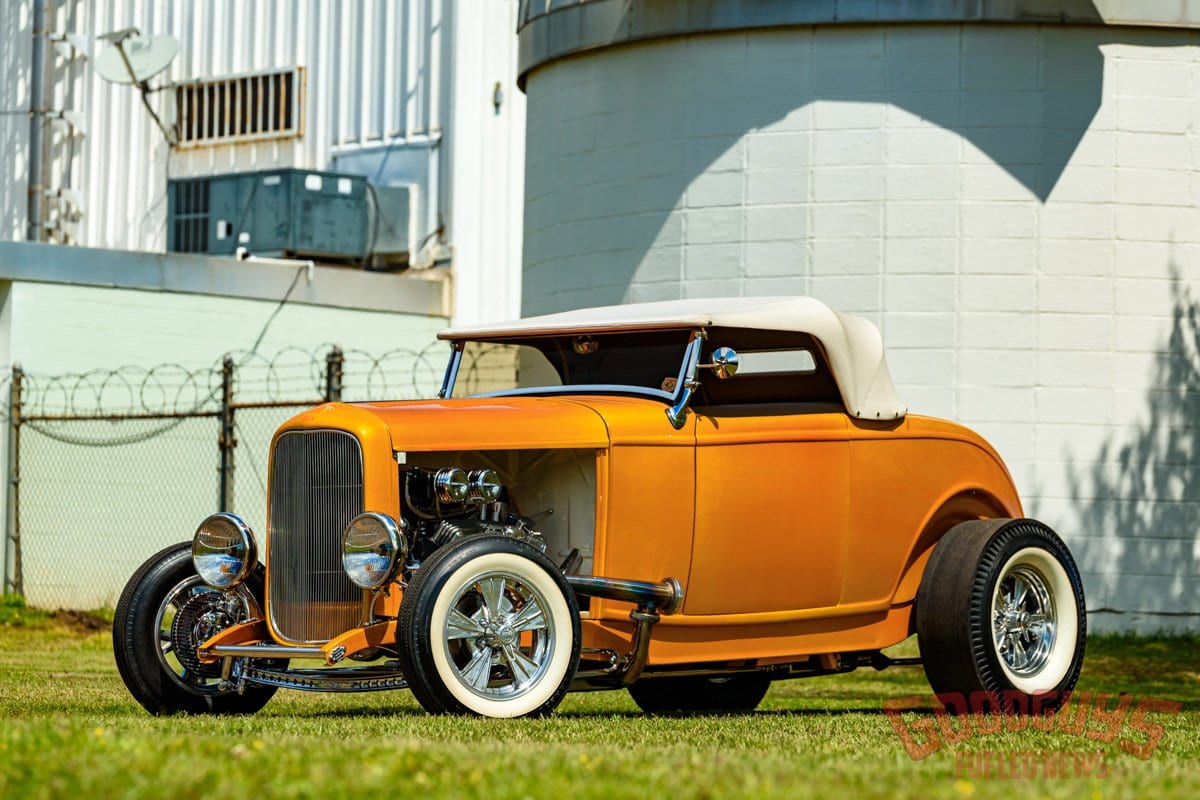
For the rear suspension, the Harris’ employed a triangulated 4-link to the limited-slip Speedway 9-inch Ford with 31-spline axles utilizing a 3.50:1 ratio gearset and 13-inch drum brakes. A 13 gallon Tanks Inc fuel tank sits behind the QA1 adjustable coilover shocks. Up front, a Pete & Jakes Superbell dropped and drilled axle and Uni-Steer half-rack connect to Super Stopper disc brakes. Polished stainless steel brake and fuel lines are used throughout. For wheels, the duo chose the Radir Tri-Ribb III with (15×4-inch) Royal front tires and Radir Cheater Slicks (15×8-inch) on the rear.

The interior was done at home in the garage using a custom Wise Guys seat in white Naugahyde vinyl with ACC 80/20 loop carpet and custom door panels. The dash insert and gauges are from Stewart Warner, while a Stealth Audio stereo with Rockford Fosgate speakers provides the tunes. All the wiring is from EZ Wire.
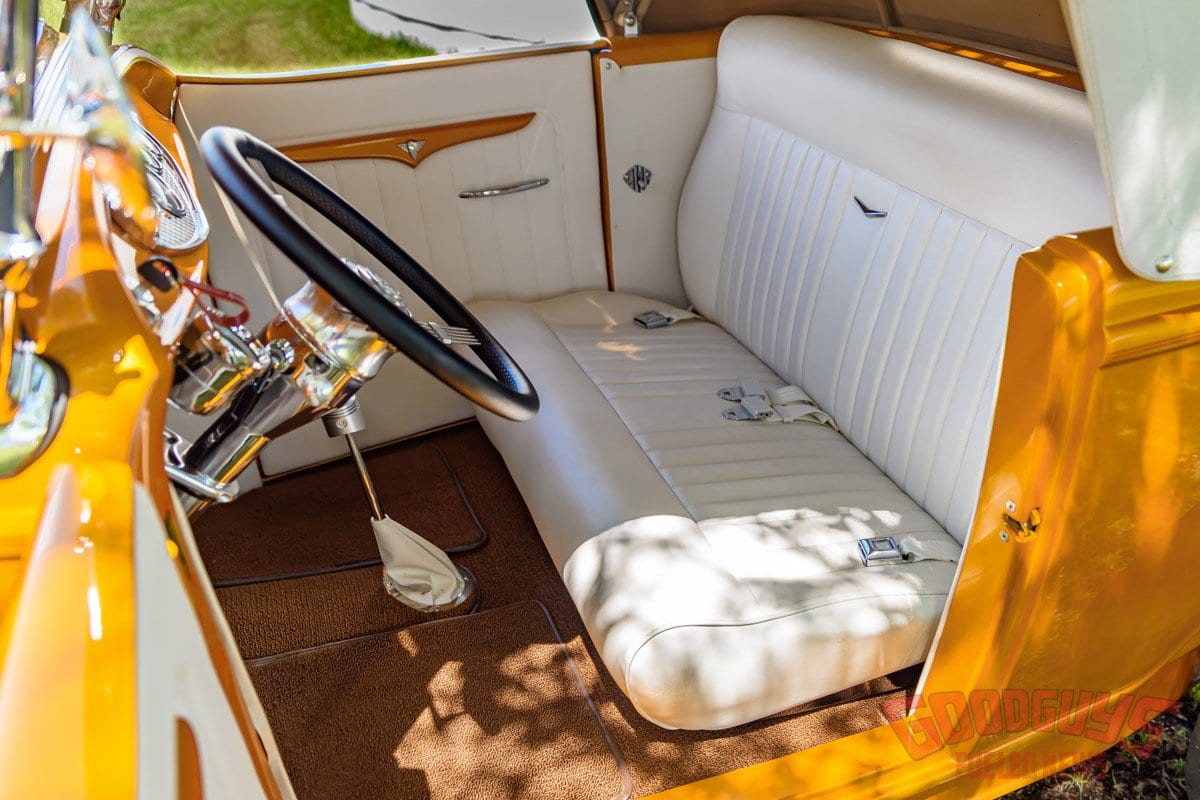
Gold Digger’s Bright Future
Roger and Miles were able to finish the little ‘32 just in time for Miles’ senior portraits. The plan was to hit the indoor car circuit before driving more often, but after debuting the car at the Goodguys Lone Star Nationals in Fort Worth and being picked for the “One Fine Duece” award, the world shut down due to the pandemic. The Vault Car Show was only the second show for the new build but they plan to hit the circuit hard now that things are opening back up.
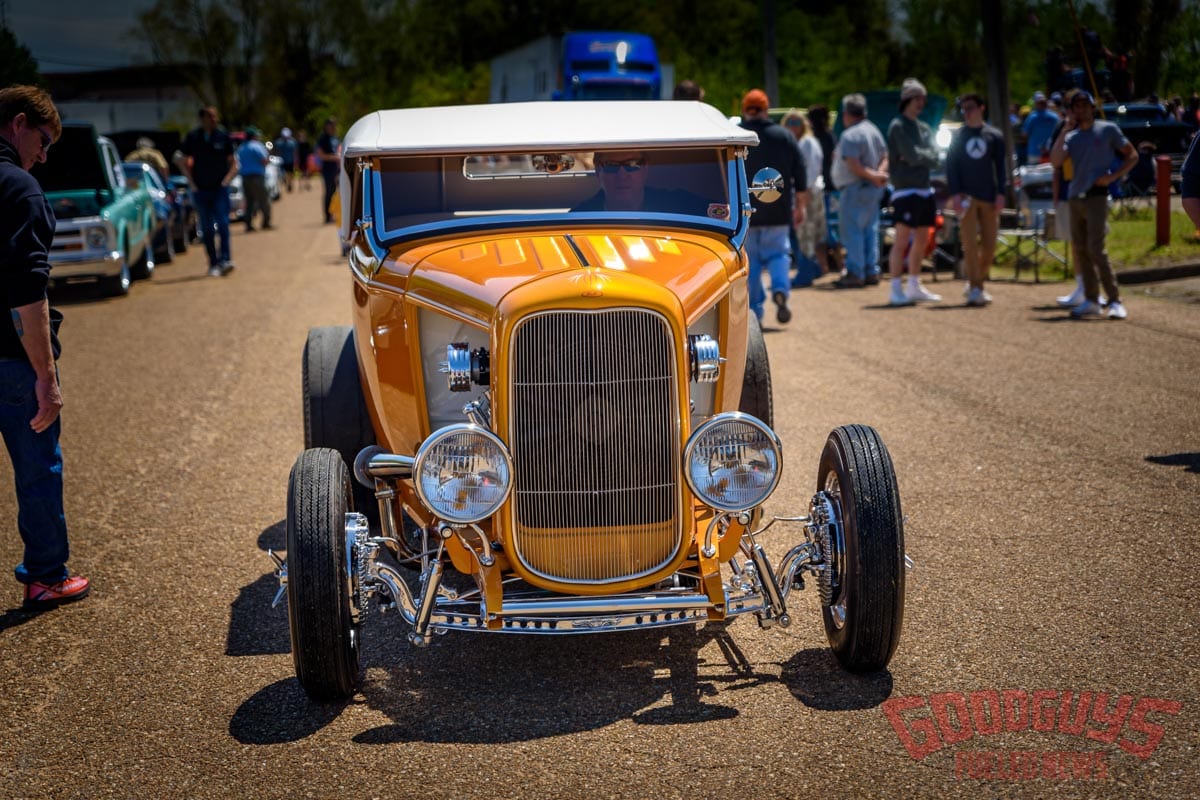
The Latham sounds more like a turbo than what people are used to hearing with a roots-style supercharger seeing it is turning five times that of the crank, but Roger says the car runs and performs well with great street manners. The most memorable part of the experience was getting to work with his son on the build and teaching him that paying attention to every single detail might not make a big difference individually, but as a whole, makes a huge impact. Also, it was important for him to teach him how to stick with a project from beginning to end, even though the finish line may seem far away.
We think Miles will make a great mechanical engineer with that kind of teaching. It’s definitely something we need to see more of, not only in our industry but the entire world. Miles is now the fourth generation of the Harris clan and is sure to carry on the legacy for the foreseeable future!
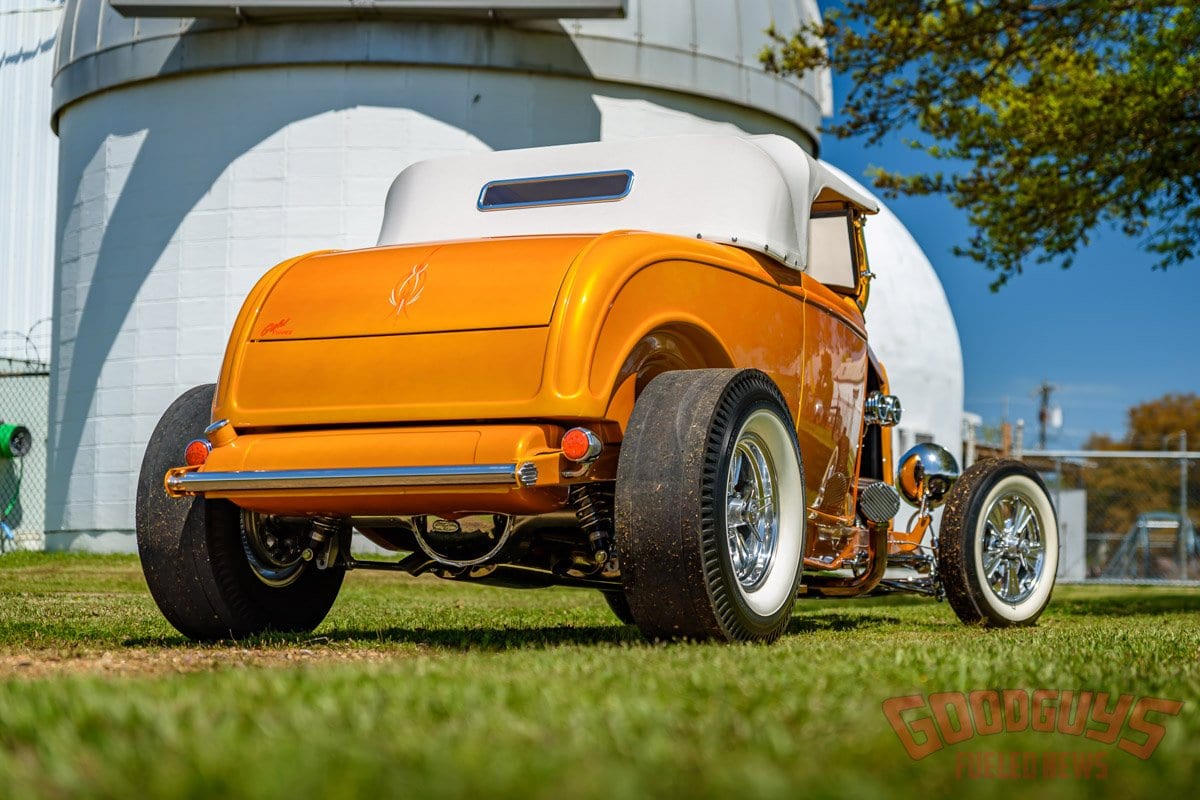
Photos by Shawn Brereton

